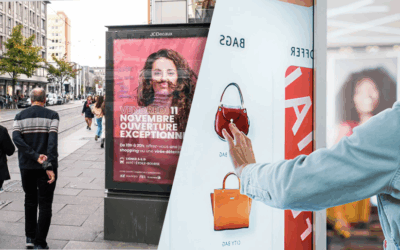In a world that is increasingly driven by data, it’s no surprise that cities are looking for ways to harness the power of technology to become so-called “smart cities.”
By using data and analytics to make informed decisions, cities can improve everything from traffic flow to waste management.
And one of the best ways to get started on this journey is by implementing software as a service (SaaS) solutions.
Here are ten ways SaaS can help make your city smarter.
The right software can help city workers be more productive.
With the right applications, city workers can access the information and tools they need from anywhere at any time. This means they can work from home, on the go, or even in other parts of the city—all they need is an internet connection. In addition, SaaS applications are often designed with ease of use in mind, so city workers can get up to speed quickly and start being productive right away.
Software can help city managers make better decisions.
City managers have to make a lot of decisions, and those decisions are often based on data. With SaaS applications, city managers can access real-time data to inform their decision-making. This data can come from a variety of sources, including sensors, social media, and IoT devices. By having all this data in one place, city managers can identify patterns and trends that they might not otherwise see.
SaaS can help cities save money.
Cities are always looking for ways to save money, and SaaS can help them do just that. For starters, SaaS applications are often more cost-effective than traditional on-premise software because there’s no need to purchase additional hardware or hire IT staff to maintain the software. In addition, SaaS applications are typically subscription-based, so cities only pay for what they need—and they can scale up or down as needed without incurring additional costs.
Help cities be more eco-friendly.
By using software applications, cities can reduce their reliance on paper documents and save energy by using fewer resources overall. In addition, many SaaS applications offer features that help users reduce their carbon footprints—such as the ability to book travel online instead of using paper tickets or the ability to recycle electronic waste safely and securely.
Encourage city residents lead healthier lives.
There are a number of ways that SaaS applications can help city residents lead healthier lives—including by providing them with access to information about healthy living options such as biking or walking trails and by helping them schedule doctor’s appointments online (which can reduce missed appointments). In addition, some cities are now using sensor-based technology to track air pollution levels and provide residents with real-time updates so they can avoid areas with high pollution levels—helping them stay healthy and safe.
Improve decision-making with data analytics.
Data is key to making smart decisions, and SaaS provides cities with the ability to collect and analyze data more efficiently. By understanding how people are using city services, officials can identify areas that need improvement and allocate resources more effectively.
Engage citizens with innovative applications.
SaaS also provides cities with the ability to develop innovative applications that engage citizens and make their lives easier. For example, a city could develop a mobile app that allows residents to report potholes or graffiti so they can be fixed more quickly.
Enhance public safety with real-time information sharing.
In today’s world, timely information sharing is critical for public safety. By using software solutions, cities can share information about crime or weather events in real-time so that citizens can take appropriate actions to stay safe.
Improve transportation with real-time data.
Traffic congestion is a major problem in many cities, but SaaS can help by providing officials with real-time data about traffic conditions. This information can be used to adjust traffic signals or redirect traffic flows so that people can get where they’re going more quickly and efficiently.
Save money with streamlined operations.
Last but not least, software can help cities save money by streamlining operations and reducing duplicate efforts. For example, if multiple city departments are collecting the same data, a SaaS solution can be used to consolidate those efforts so that everyone is working from the same database. This not only saves time and money, but it also reduces the risk of errors.
Software for Smart Cities
These are just a few of the ways that SaaS can help make your city smarter. If you’re looking for ways to use technology to improve your city’s operations, SaaS is a great place to start.




